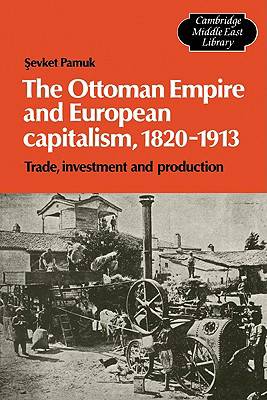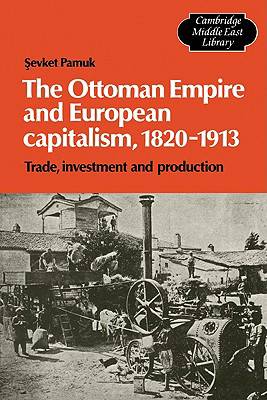
Je cadeautjes zeker op tijd in huis hebben voor de feestdagen? Kom langs in onze winkels en vind het perfecte geschenk!
- Afhalen na 1 uur in een winkel met voorraad
- Gratis thuislevering in België vanaf € 30
- Ruim aanbod met 7 miljoen producten
Je cadeautjes zeker op tijd in huis hebben voor de feestdagen? Kom langs in onze winkels en vind het perfecte geschenk!
- Afhalen na 1 uur in een winkel met voorraad
- Gratis thuislevering in België vanaf € 30
- Ruim aanbod met 7 miljoen producten
Zoeken
The Ottoman Empire and European Capitalism, 1820 1913
Trade, Investment and Production
Sevket Pamuk, Pamuk Sevket
€ 64,95
+ 129 punten
Omschrijving
Originally published in 1987, this book examines the consequences of the nineteenth-century economic penetration of Europe into the Ottoman Empire. Professor Pamuk makes subtle use of a very wide range of sources encompassing the statistics of most of the European countries and Ottoman records not previously tapped for this purpose. His economic and quantitative analysis established the long-term trends of Ottoman foreign trade and European investment in the Empire. The later chapters focus on the commercialisation of agriculture and the decline as well as the resistance of handicrafts. Geographically, most of the volume focuses on the area within the 1911 borders of the Empire - Turkey, northern Greece, Greater Syria and Iraq. Professor Pamuk compares the relationship of the Ottoman Empire to the world economy with that of other parts of the non-European world and concludes that the two distinguishing features of the Ottoman case were the environment of Great Power rivalry and the ability of the government to react against European pressures.
Specificaties
Betrokkenen
- Auteur(s):
- Uitgeverij:
Inhoud
- Aantal bladzijden:
- 292
- Taal:
- Engels
- Reeks:
- Reeksnummer:
- nr. 12
Eigenschappen
- Productcode (EAN):
- 9780521130929
- Verschijningsdatum:
- 11/02/2010
- Uitvoering:
- Paperback
- Formaat:
- Trade paperback (VS)
- Afmetingen:
- 152 mm x 229 mm
- Gewicht:
- 430 g

Alleen bij Standaard Boekhandel
+ 129 punten op je klantenkaart van Standaard Boekhandel
Beoordelingen
We publiceren alleen reviews die voldoen aan de voorwaarden voor reviews. Bekijk onze voorwaarden voor reviews.









